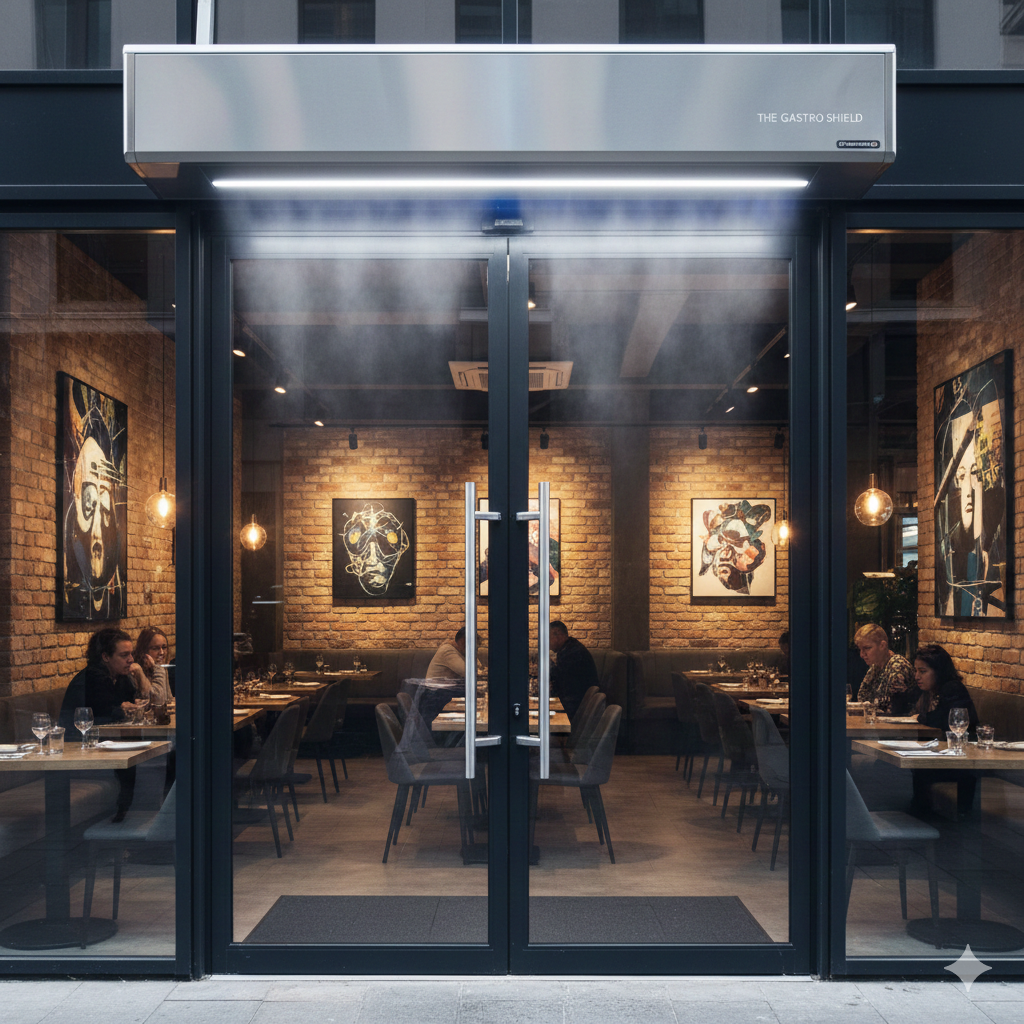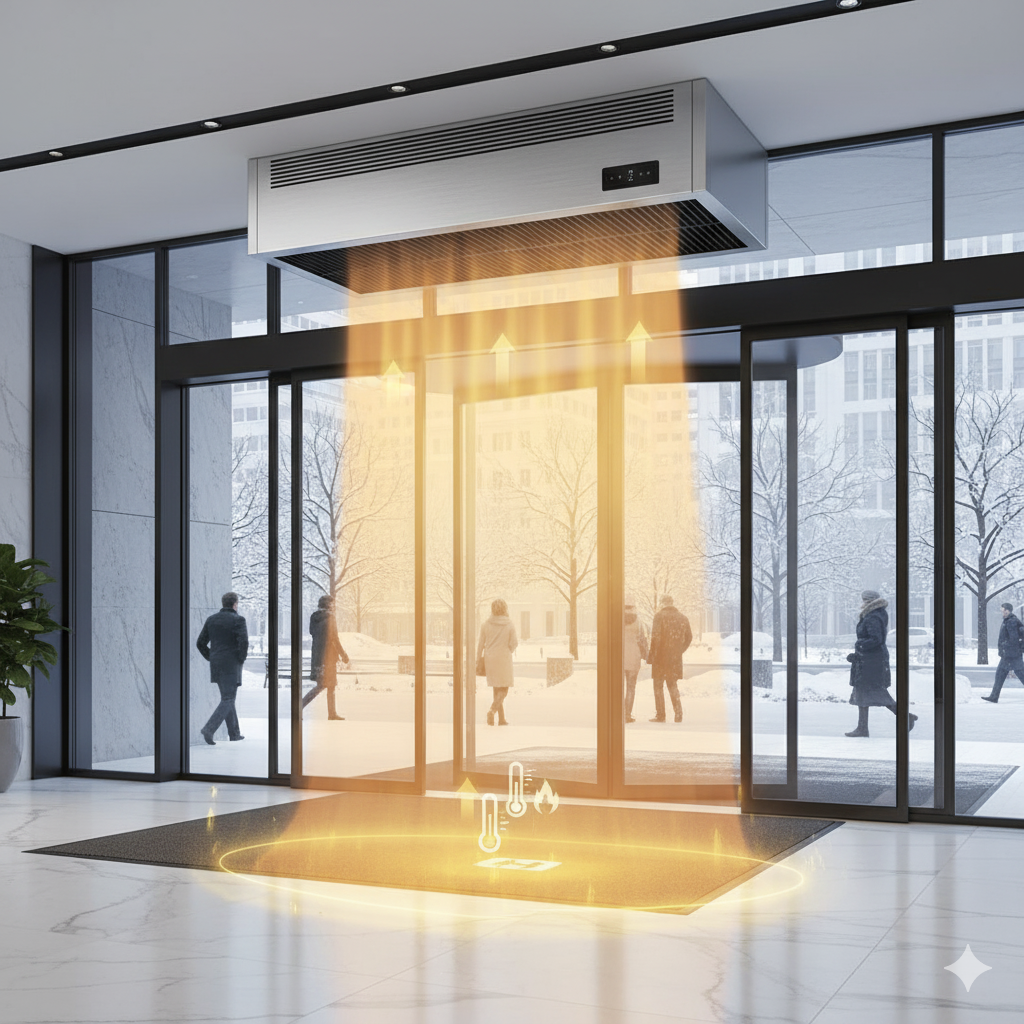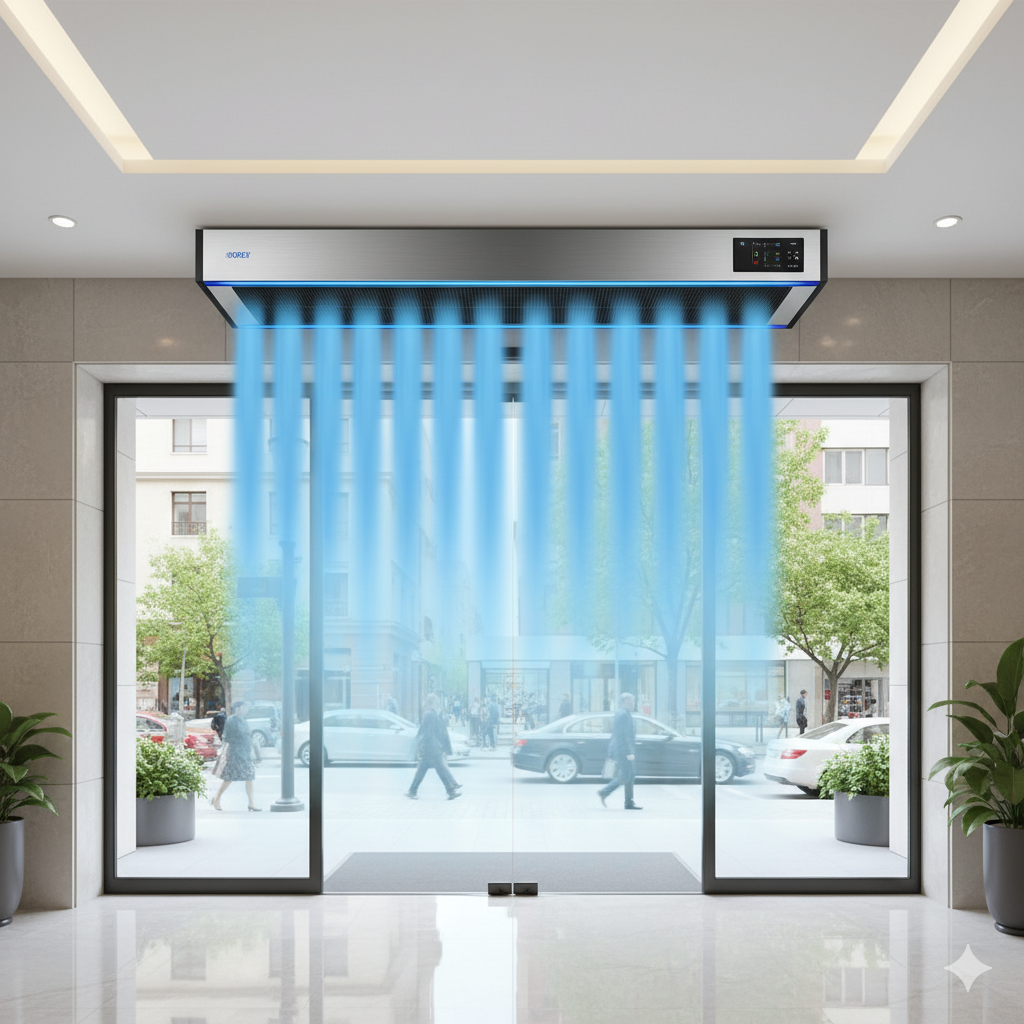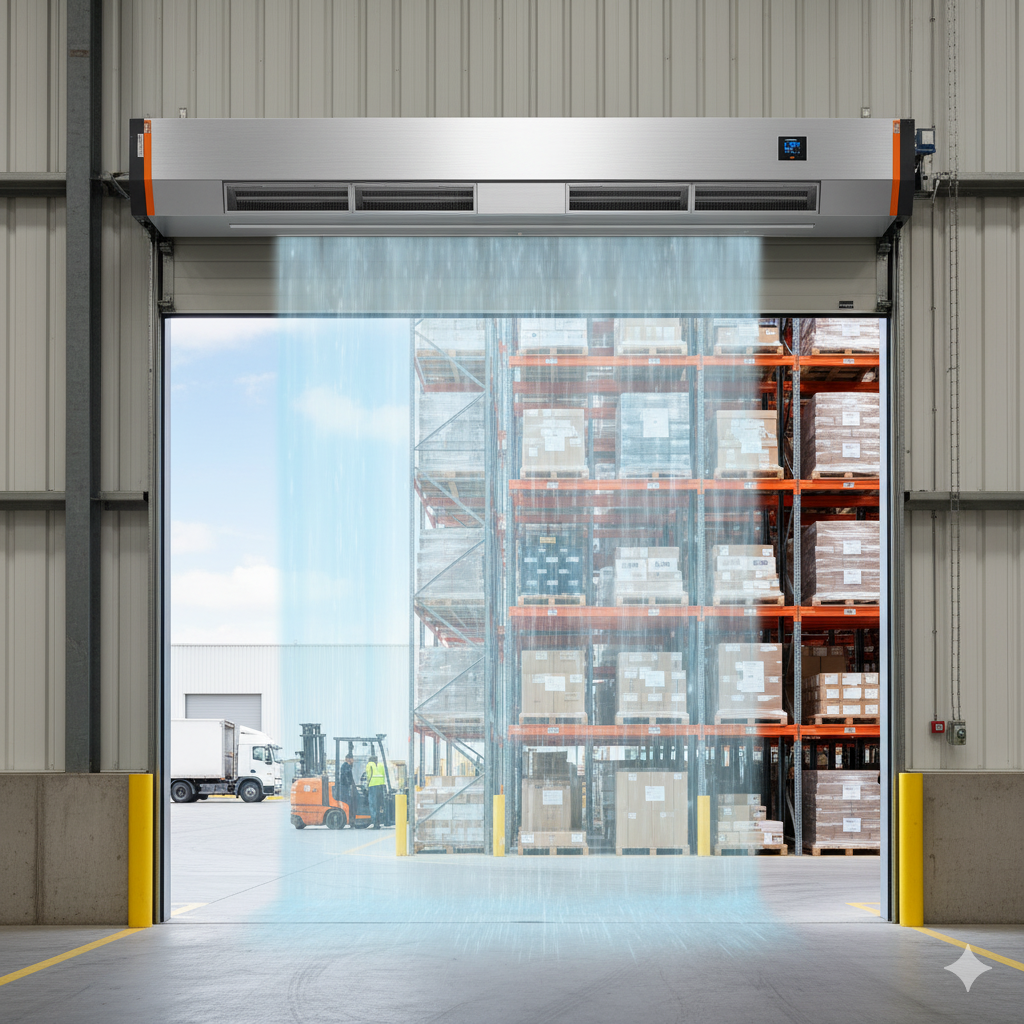Understanding the Role of an Air Curtain for Clean Room Environments
Air curtain for clean room applications is an essential technology that maintains sterile and controlled atmospheres in sensitive facilities like pharmaceutical labs, electronics manufacturing, and medical research centers. These devices create an invisible barrier of high-velocity air at entry points, preventing contaminants such as dust, microbes, and pollutants from entering the clean room. By effectively separating the clean interior from external impurities, an air curtain for clean room setups ensures compliance with stringent ISO standards, safeguarding product quality and operational integrity. This innovation is particularly vital in industries where even microscopic particles can compromise entire production processes, making it a cornerstone of modern contamination control strategies.
Key Features and Engineering Excellence in Air Curtains for Clean Rooms
Engineered with precision, the air curtain for clean room systems utilizes advanced airflow dynamics to generate a laminar or turbulent stream that acts as a reliable seal. High-grade materials, including corrosion-resistant casings and HEPA-filtered intakes, ensure durability and filtration efficiency, capturing up to 99.97% of airborne particles. Many models incorporate intuitive digital control panels for customizable velocity and direction, allowing operators to fine-tune performance based on room specifications. Integration with building management systems (BMS) enables remote monitoring and automation, enhancing operational efficiency without compromising the whisper-quiet operation essential for non-disruptive environments. This level of sophistication not only minimizes energy consumption but also reduces the need for frequent maintenance, providing long-term reliability in high-stakes settings.
Benefits of Installing an Air Curtain for Clean Room Facilities
Implementing an air curtain for clean room doors offers multifaceted advantages, starting with superior contamination prevention that drastically cuts down on cleaning cycles and downtime. By maintaining positive pressure differentials, these units help preserve the controlled humidity and temperature levels critical for processes like semiconductor fabrication or sterile packaging. Energy savings are another highlight; by blocking conditioned air loss, facilities can lower HVAC loads by up to 30%, translating to significant cost reductions over time. Moreover, the enhanced safety profile—reducing cross-contamination risks—supports regulatory adherence and boosts worker confidence in handling sensitive materials. For businesses, this translates to improved product yields, fewer recalls, and a stronger competitive edge in quality-driven markets.
Advanced Innovations: Air Curtain with Integrated Heating for Clean Rooms
Taking functionality a step further, the air curtain for clean room with heater combines thermal regulation with barrier protection, ideal for environments where temperature fluctuations can affect delicate operations. This cutting-edge variant features an advanced heating element that delivers uniform warmth, countering cold drafts without introducing contaminants. The golden cascade of heated air visually confirms optimal performance, enveloping entryways in a gentle, efficient barrier that maintains indoor climates year-round. Sleek, minimalist designs ensure seamless integration into modern clean room aesthetics, adhering to environmental standards while minimizing noise to below 50 decibels. For OEM applications, customization options allow tailoring to specific voltage, size, and airflow requirements, making it versatile for global installations.
Applications and Case Studies of Air Curtains in Clean Room Settings
In pharmaceutical clean rooms, the air curtain for clean room has proven instrumental in upholding GMP guidelines, with case studies showing a 40% reduction in microbial ingress during high-traffic periods. Electronics manufacturers benefit from its role in preventing static-inducing particles, preserving component integrity during assembly. Hospitals and biotech labs use these systems at sterile corridors to isolate zones, ensuring patient safety and research accuracy. A notable example involves a leading semiconductor firm that integrated heated air curtains, resulting in stabilized ambient conditions that improved wafer yields by 15%. These real-world successes underscore the device's adaptability across sectors, from food processing to aerospace, where precision and purity are non-negotiable.
Selecting and Maintaining Your Air Curtain for Clean Room
Choosing the right air curtain for clean room involves assessing factors like doorway dimensions, air volume needs, and environmental demands. Opt for models with variable speed fans and filtration options to match operational scales, ensuring the unit's CFM rating aligns with room velocity requirements. Regular maintenance, including filter replacements every 6-12 months and airflow calibration, is crucial for sustained efficacy. Professional installation by certified technicians guarantees optimal mounting height and alignment, maximizing the barrier's effectiveness. By prioritizing quality components and adhering to manufacturer guidelines, facilities can extend the lifespan of these systems to over a decade, yielding a robust ROI through enhanced cleanliness and efficiency.
The Future of Air Curtain Technology in Clean Room Design
Looking ahead, the evolution of air curtain for clean room technology promises even smarter solutions, with IoT connectivity for predictive maintenance and AI-driven adjustments to airflow based on real-time contaminant detection. As sustainability goals intensify, expect eco-friendly refrigerants and solar-compatible models to dominate, further reducing the carbon footprint of clean facilities. These advancements will continue to blend innovation with practicality, ensuring that air curtains remain indispensable for maintaining ultra-pure environments. For organizations committed to excellence, investing in such forward-thinking systems not only meets current standards but anticipates future regulatory landscapes, securing long-term operational superiority.
In summary, the air curtain for clean room stands as a pinnacle of engineering that harmonizes protection, efficiency, and comfort. Whether standard or heated variants, these devices empower industries to thrive in contaminant-free zones, driving productivity and innovation without compromise.






